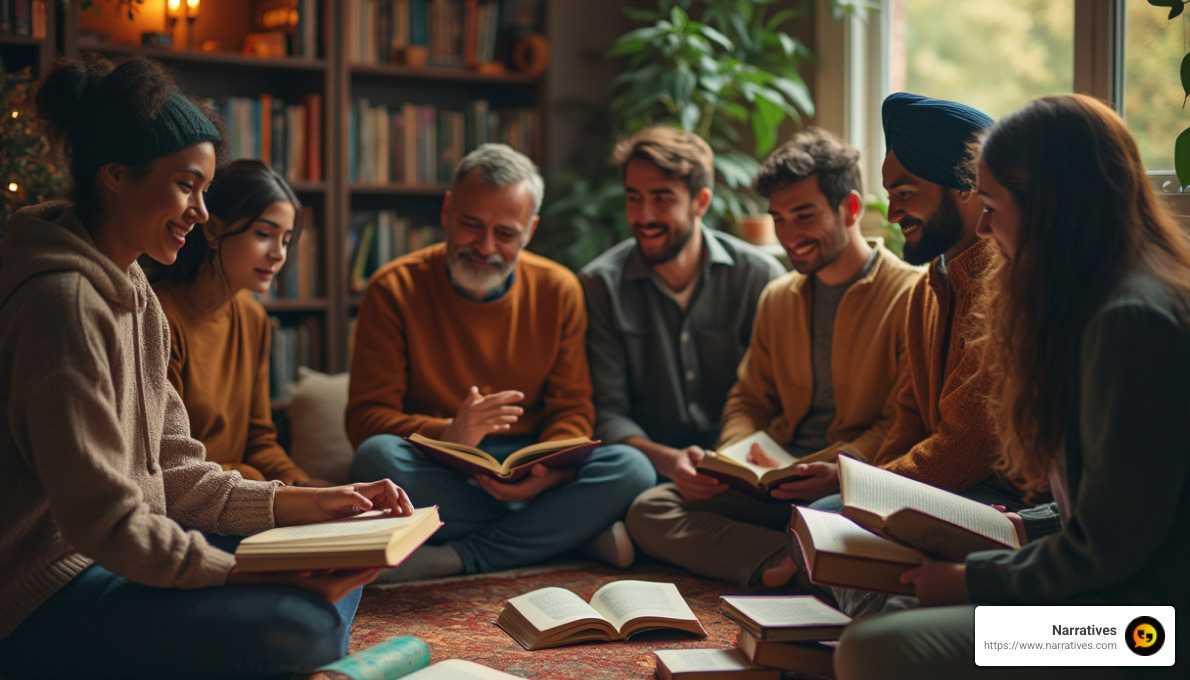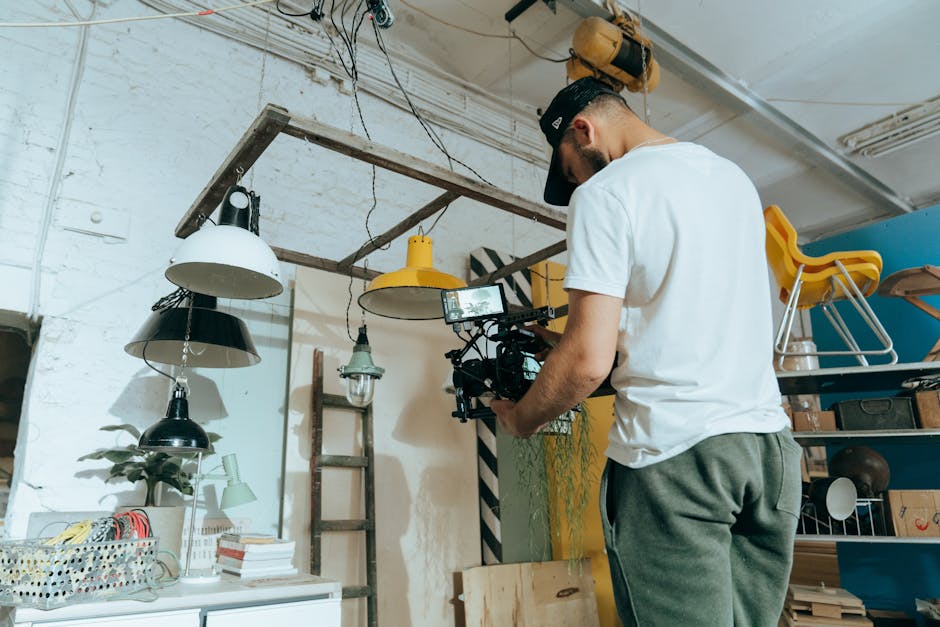The Best Social Justice Videos to Spark Your Passion

The Best Social Justice Videos to Spark Your Passion
Best social justice videos can be transformative in how we perceive and engage with crucial issues. These videos bring stories to life and amplify diverse perspectives. Whether you are seeking ways to educate others or simply want to inform yourself, this curated list will guide you towards videos that educate, inspire, and ignite action.
- The Power of Vulnerability – Brené Brown: Discover the importance of embracing vulnerability to foster authenticity.
- The Danger of a Single Story – Chimamanda Adichie: A profound exploration of the risks associated with a limited perspective.
- How to Tell Someone They Sound Racist – Jay Smooth: Practical advice on navigating sensitive conversations about race.
In a world that often feels divided, digital storytelling emerges as a compelling tool for non-profits. It allows them to showcase their mission and evoke empathy. Video content has the power to transcend barriers and connect with audiences on deeper levels.
Empathy-driven narratives are essential, especially for organizations striving for social change. With limited resources and growing challenges, non-profits need reliable content that represents their values and goals authentically. Understanding this need, we've gathered standout social justice videos that can help you make an impact, whether you’re educating a group or inspiring change within your community.

Top 10 Best Social Justice Videos
When it comes to sparking change, social justice videos are powerful tools. They can educate, inspire, and push viewers to think differently about critical issues like racial justice and gender-based violence.
The Danger of a Single Story – Chimamanda Adichie
Chimamanda Adichie’s talk is a must-watch for anyone interested in understanding the complexities of identity. She warns against reducing people to a single narrative, emphasizing the importance of intersectionality. Adichie's storytelling illustrates how diverse perspectives can broaden our understanding of the world.The Power of Vulnerability – Brené Brown
Brené Brown’s TED Talk on vulnerability isn't just about personal growth. It’s a call to accept vulnerability in the fight for social justice. By opening up and allowing ourselves to be vulnerable, we can connect more deeply with others, fostering empathy and understanding.How to Tell Someone They Sound Racist – Jay Smooth
Jay Smooth offers practical advice on tackling racism with a focus on actions rather than identities. This approach helps maintain productive conversations by fostering guilt over shame, allowing individuals to learn and grow without feeling attacked.If I Should Have a Daughter… – Sarah Kay
Sarah Kay’s spoken word poetry uses vivid imagery to explore gender messages in society. Her performance is a powerful reminder of the impact words can have in shaping our views on gender roles and expectations.The Opportunity of Adversity – Aimee Mullins
Aimee Mullins challenges the societal constructs of ableism. She highlights how adversity can be an opportunity for growth and change, urging viewers to rethink how society is structured around disability.What Is Privilege? – Buzzfeed
This video simplifies the concept of privilege using a privilege walk activity. It’s a great starting point for discussions on societal advantages and disadvantages, making the abstract concept more tangible and relatable.Listening to Shame – Brené Brown
In her second TED Talk, Brené Brown digs into the difference between guilt and shame. This video is crucial for anyone looking to engage in social justice work without falling into the trap of shame-based activism.Albert White Hat
Albert White Hat shares his journey through oppression and the healing power of forgiveness. His story is a testament to resilience and the importance of cultural identity in overcoming systemic injustice.Every Kid Needs a Champion – Rita Pierson
Rita Pierson emphasizes the role of relationships in education and advocacy. Her talk is a reminder that every child deserves someone who believes in them, highlighting the connection between education and social justice.Justice that Heals – Fania Davis
Fania Davis speaks on Restorative Justice, advocating for a shift from punishment to healing. Her insights draw on Indigenous views, offering a transformative approach to justice that prioritizes collaboration and healing over division.
These videos are not just educational tools; they are calls to action. They challenge us to reflect on our own biases and inspire us to become active participants in the fight for justice. Whether used in classrooms, workshops, or personal viewing, these videos have the potential to ignite change and foster a more inclusive society.
The Power of Vulnerability – Brené Brown
Brené Brown’s TED Talk on vulnerability is more than just a lesson in personal development; it's a transformative tool for social justice. By embracing vulnerability, we open doors to deeper connections, fostering empathy and understanding.
Brown argues that vulnerability is the birthplace of innovation, creativity, and change. In the context of social justice, this means allowing ourselves to be open to the discomfort that comes with confronting biases and injustices. It’s about having the courage to admit what we don’t know and to be willing to learn and grow.
Her insights help us understand that vulnerability is not a weakness but a powerful catalyst for emotional learning. By being vulnerable, we can break down the walls that divide us and build bridges of understanding and empathy. This is crucial in any social justice movement, where connection and empathy drive meaningful change.

Brown’s talk encourages us to lean into discomfort and accept the emotions that come with it. This approach can lead to more authentic dialogues around social issues, allowing for deeper engagement and more effective advocacy. It’s about showing up, being seen, and daring to be vulnerable, even when it’s tough.
Incorporating vulnerability into social justice work can transform how we engage with others and approach the challenges we face. It allows us to connect on a human level, making the fight for justice more personal and impactful.
The Danger of a Single Story – Chimamanda Adichie
Chimamanda Adichie's TED Talk, "The Danger of a Single Story," is a compelling narrative about the risks of accepting a single perspective. Adichie shares personal anecdotes to illustrate how single stories can shape, and often distort, our understanding of cultures, people, and identities.
Adichie explains that when we hear only a single story about another person or country, we risk a critical misunderstanding. This concept is vital in social justice work, where recognizing the complexity of human experiences is essential. A single story reduces individuals to stereotypes, stripping away their rich, multifaceted identities.
Intersectionality: More Than One Story
Adichie's message aligns closely with the concept of intersectionality. Intersectionality is the idea that people have multiple overlapping identities, such as race, gender, and class, which can affect their experiences of oppression and privilege. Recognizing intersectionality helps us see beyond single stories and appreciate the diverse narratives that shape people's lives.
By embracing multiple stories, we can challenge stereotypes and broaden our understanding. This approach encourages us to engage with others' experiences and recognize the interconnectedness of social justice issues.
Breaking Down Stereotypes
Adichie's talk is a call to action to seek out diverse stories and voices. She urges us to listen to many perspectives, especially those that are underrepresented. This not only enriches our understanding but also helps dismantle harmful stereotypes.
Incorporating Adichie's insights into social justice education can lead to more inclusive and effective advocacy. By valuing multiple narratives, we create space for all voices to be heard, fostering a more equitable and just society.
Adichie's powerful storytelling reminds us that we are all more than a single story. Embracing this complexity is crucial for anyone committed to social justice.
How to Tell Someone They Sound Racist – Jay Smooth
Addressing racism can be tricky. Jay Smooth's video, "How to Tell Someone They Sound Racist," offers a simple yet effective approach to these difficult conversations.
Guilt vs. Shame: The Key Difference
Jay Smooth emphasizes the importance of focusing on actions rather than labeling people. This approach aligns with the concept of guilt vs. shame.
- Guilt is about recognizing a mistake: "I did something wrong."
- Shame is about feeling like a bad person: "I am wrong."
When discussing racism, it's crucial to highlight what someone said or did, not who they are. This distinction helps keep the conversation constructive and avoids making the other person defensive.
The Iceberg Theory
Smooth uses an analogy called the Iceberg Theory. He suggests that racist behaviors are like the tip of an iceberg. They are visible, but there's much more beneath the surface—like biases and stereotypes that people may not be aware of.
By addressing the behavior (the tip of the iceberg), you can help someone explore and understand the underlying issues without feeling attacked.
Practical Tips for Conversations
Here are some practical tips from Jay Smooth's approach:
- Stay Calm: Keep your emotions in check to maintain a respectful dialogue.
- Be Specific: Point out specific actions or words rather than making general accusations.
- Listen: Give the other person a chance to explain and reflect on their behavior.
These strategies help create a space for learning and growth, rather than conflict.
The Impact of Constructive Conversations
Having these discussions can lead to meaningful change. When people understand the impact of their words and actions, they are more likely to adjust their behavior. This is a crucial step in promoting racial justice and fostering a more inclusive society.
Jay Smooth's insights are invaluable for anyone committed to social justice. By focusing on guilt rather than shame, we can engage in more productive conversations about racism and contribute to a more equitable world.
If I Should Have a Daughter… – Sarah Kay
Sarah Kay invites us into a world of poetry and profound gender messages with her spoken word performance, "If I Should Have a Daughter..." This piece is not just a poem; it's a heartfelt message about the complexities of growing up as a girl in today's society.
The Power of Poetry
Poetry has a unique ability to connect with our emotions. It can make us feel seen and understood. Sarah Kay uses this power to address the gender expectations and messages that girls encounter throughout their lives. Her words resonate deeply, offering both comfort and a call to action.
Breaking Down Gender Messages
In her poem, Kay explores the gender messages that are often imposed on young girls. She speaks about the strength and resilience required to steer a world that can be both beautiful and challenging. By sharing her hopes and dreams for her future daughter, she highlights the importance of empowering girls to be confident and courageous.
A Personal and Universal Message
The beauty of Kay's poetry is its personal yet universal appeal. While she speaks from her perspective, her message is one that resonates with many. It encourages listeners to reflect on their own experiences and the societal norms that shape them.
Engaging with Emotion
Sarah Kay's performance is a powerful example of how emotional engagement can drive social change. By tapping into the emotions of her audience, she encourages them to think critically about gender roles and to imagine a world where everyone can thrive, regardless of gender.
"If I Should Have a Daughter..." is more than just a poem—it's an invitation to challenge the status quo and to envision a future where gender does not limit potential. Through her words, Sarah Kay inspires us to consider our roles in shaping this future, one where poetry and action work hand in hand to create meaningful change.
The Opportunity of Adversity – Aimee Mullins
Aimee Mullins, an athlete, model, and advocate, challenges the way we think about ableism and societal norms. Her talk, "The Opportunity of Adversity," is a powerful reminder that the barriers often lie not within individuals but in the way society is constructed.
Redefining Disability
Mullins redefines what it means to live with a disability. She argues that disability is not a problem within the person but a challenge created by societal structures. By reshaping environments and attitudes, we can foster inclusivity and empowerment.
Societal Construction and Ableism
Ableism is the discrimination against people with disabilities, often rooted in societal assumptions about what is "normal" or "capable." Mullins highlights how these assumptions limit opportunities and perpetuate stereotypes. She encourages us to question and dismantle these barriers, paving the way for a more equitable society.
Turning Challenges into Opportunities
Mullins's own story is a testament to resilience and change. She shares how her experiences have shaped her view of adversity as an opportunity for growth and innovation. Her message is clear: when society accepts diversity, everyone benefits.
Inspiring Change
Aimee Mullins's talk is more than an exploration of adversity—it's a call to action. By shifting our perspectives on ability and disability, we can create a world where everyone has the chance to succeed. Her story inspires us to rethink how we define and support those who steer life differently, and to build systems that celebrate all forms of ability.
In "The Opportunity of Adversity," Mullins challenges us to imagine a future where societal structures are inclusive and empowering, ensuring that everyone can thrive. Her vision is one where adversity is not a setback, but a stepping stone to innovation and progress.
Frequently Asked Questions about Social Justice Videos
What are the best social justice videos for students?
Social justice videos can be a powerful tool for student engagement. They bring complex issues to life and make them relatable. Some of the best social justice videos for students include:
"The Danger of a Single Story" by Chimamanda Adichie: This video teaches students about intersectionality and the importance of understanding multiple perspectives. Adichie's storytelling helps students see beyond stereotypes and appreciate diversity.
"The Power of Vulnerability" by Brené Brown: While not solely about social justice, this video encourages students to accept vulnerability, a key component in understanding and discussing social issues.
"How to Tell Someone They Sound Racist" by Jay Smooth: This video is great for helping students differentiate between guilt and shame in conversations about racism. It emphasizes focusing on actions rather than labeling people.
These videos are excellent resources for fostering critical thinking and empathy among students.
How can social justice videos be used in workshops?
Social justice videos can transform workshops by providing a shared starting point for discussions. They are especially effective with executive teams and organizations seeking to foster emotional engagement and drive change. Here's how they can be used:
Icebreakers: Start with a video like "If I Should Have a Daughter…" by Sarah Kay to set the emotional tone and open participants to new perspectives.
Discussion Starters: Videos like "The Matrix – Red Pill, Blue Pill" can spark conversations about societal structures and the myth of meritocracy.
Deep Dives: Use videos such as "The Opportunity of Adversity" by Aimee Mullins to explore specific topics like ableism and societal norms, encouraging participants to think critically about systemic issues.
By incorporating these videos, workshops can become more dynamic and impactful, encouraging participants to engage deeply with the material.
What impact do social justice videos have on viewers?
Social justice videos have a profound impact on viewers by fostering emotional resonance and inspiring social change. Here's what they can achieve:
Emotional Connection: Videos like "Every Kid Needs a Champion" by Rita Pierson highlight the power of relationships and advocacy, creating an emotional bond with the audience.
Awareness and Reflection: Videos such as "What Is Privilege?" by Buzzfeed help viewers reflect on their own experiences and privileges, promoting self-awareness and empathy.
Motivation to Act: Many viewers are inspired to take action after watching these videos. For example, Edna Chavez's activism story encourages young people to engage in social movements and make their voices heard.
Overall, social justice videos are a catalyst for change, encouraging viewers to reflect, empathize, and take meaningful action in their communities.
Conclusion
Where stories shape perceptions and drive change, it's crucial for non-profits to harness the power of digital storytelling. At Narratives, we specialize in creating high-quality, emotionally resonant content that lifts underrepresented voices and inspires action.
Partnering with non-profits, we craft compelling social justice videos that not only highlight important issues but also build trust and increase visibility. Whether it's through Brené Brown's insights on vulnerability or Chimamanda Adichie's exploration of intersectionality, these videos serve as powerful tools for education and advocacy.
Our goal is to help purpose-driven organizations share their impact stories in ways that resonate deeply with audiences, fostering empathy and prompting social change. By focusing on community-driven storytelling, we aim to differentiate ourselves and establish authority in the field of digital content for social good.
Ready to tell your story? Explore our media services and find how we can help amplify your mission through powerful storytelling.


